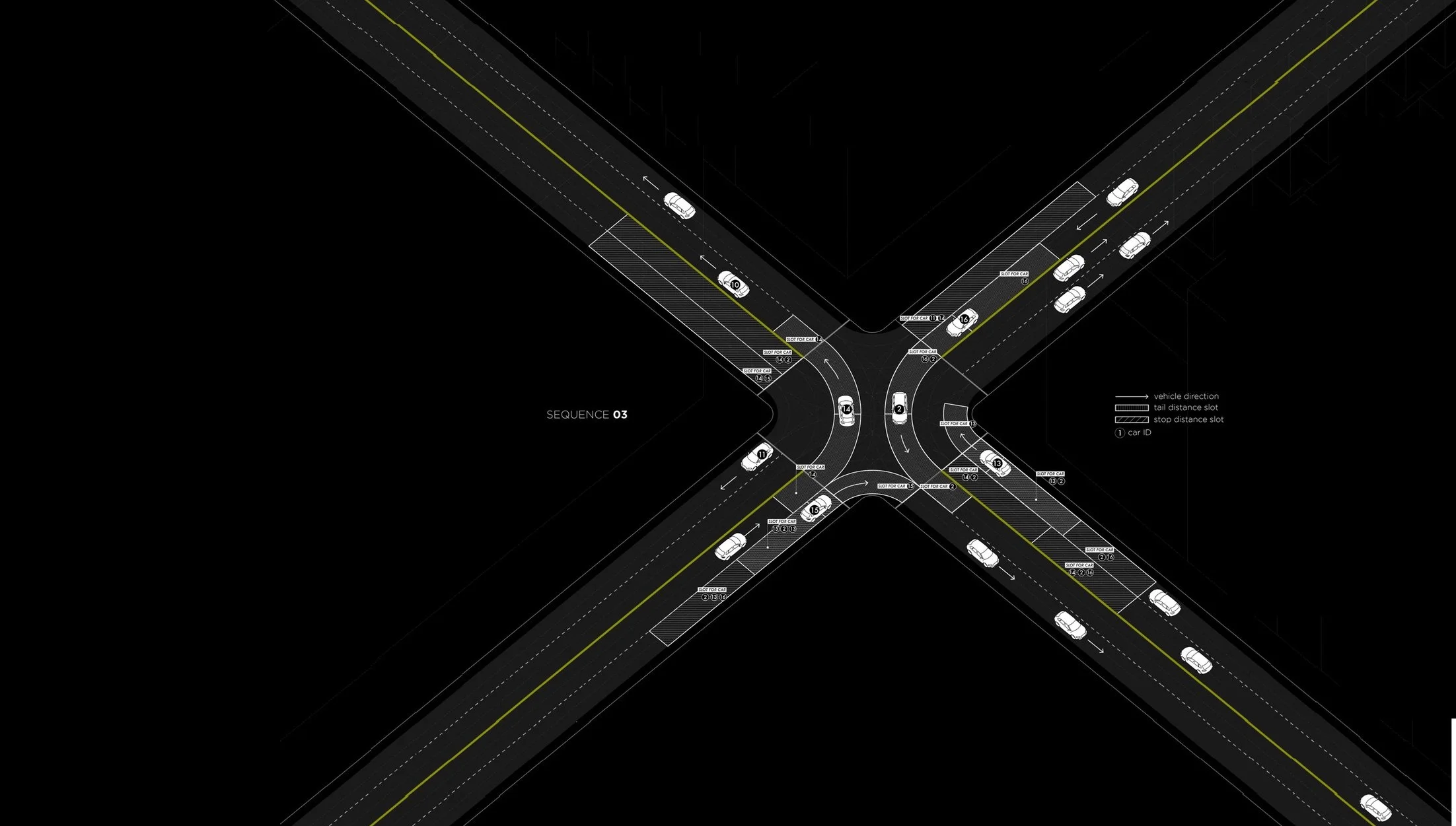
The connected and automated signal control of tomorrow. Fully multimodal, fully cooperative
Through next generation traffic signal control, we are redefining how the ground rules of movement are dynamically set and communicated in cities. We do this by utilizing cutting-edge control algorithms, innovative data streams, and machine learning technologies that enable unprecedented system-level distributed control, resiliency, scalability, and sustainability.

Disrupting an antiquated paradigm
1970s era technology based on simple timing plans regulates 98% of signalized intersections in the U.S. It is neither adaptive to real-time traffic conditions nor built for the connected, multimodal, and cooperative transportation future envisioned by leading cities today. The social, economic, environmental, and energy costs associated with the current paradigm are huge: estimated to reach $2.8 trillion in the U.S. between 2013 and 2030. Not to mention the annual 1 billion metric tons of emissions that degrade the environment and public health.
We are disrupting this status quo by deploying the best of dynamic and distributed network control and connectivity capabilities developed with U.S. federal government research funding over the recent decades.
The new paradigm is supported by the following principles:
Multimodal connectivity / Integration
Multi-jurisdictional interoperability
capital light deployment and scalability
System / Network-level co-optimization
Signal Optimization / priority / preemption harmonization
Real-time performance accountability and transparency
Resilience and cybersecurity
Data Privacy and trust
Demonstrated impact based on science rather than conjecture
The research driving our technology has been peer reviewed and validated in both simulation and real-world environments by internal and independent research scientists. We take a scientific approach to validation rather than stopping at conjecture. Our partners include researchers affiliated with the University of California, University of Southern California, Argonne National Laboratory, and the National Renewable Energy Laboratory that help validate our technology and project societal impact.
50%
29%
25%
upper range Network Capacity gains achieved to date vs. recently updated time of day plans (in simulated environment)
upper range Network travel time benefits achieved to date vs. recently updated time of day plans (in real-world environment)
at scale Greenhouse gas emissions savings projected combining the effects of reduced stop-and-go / idling and eco-driving
Source: University of Southern California, University of California, Argonne National Laboratory
Experience & Recognition
We are a public benefit focused venture with decades of experience in intelligent transportation system research and development. The team consists of top researchers, planners, engineers, and designers affiliated with MIT, USC, and UC Berkeley research labs, along with U.S. national laboratories. Our core research and development has been funded by the U.S. government's National Science Foundation, Department of Transportation, California Department of Transportation, and Department of Energy to positively transform roadway movement.
The automatic control research driving our technology was recognized by the American Automatic Control Council through the prestigious Donald P. Eckman Award in 2017, and the World Economic Forum has recognized the project as one of the next generation of fast-growing enterprises shaping the future of business and society.
